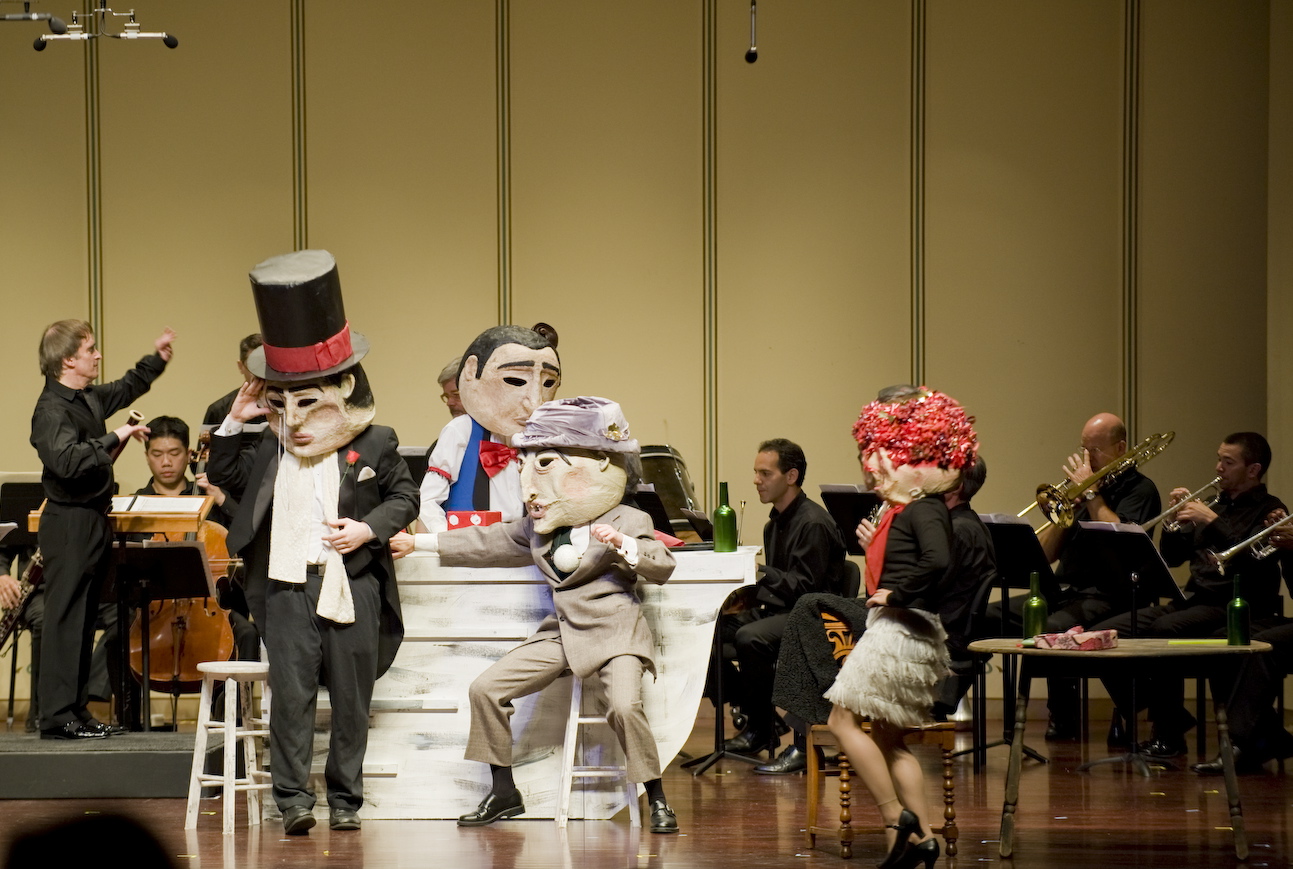American jazz filtered through experimental Europeans at Ravinia

James Conlon leads the Chicago Chamber Musicians in Milhaud, with puppets, Tuesday night at Ravinia. Photo: Russell Jenkins/Ravinia Festival
That established Europe gave classical music to a fledging America is well known. That African-Americans would cross-fertilize European classical harmonies with West African rhythms to create a new American music that would be labeled jazz is also widely acknowledged.
Less recognized is the practical effect that jazz being imported back to the continent initially had on European classical music, a theme that was explored across a fascinating Martin Theatre “James Conlon Showcase” program Tuesday evening at Ravinia.
Conlon acted as host and guide for the entire evening as well as conductor for two-thirds of it. His first goal was to demonstrate how jazz crossed the Atlantic through the 369th division, an African-American regiment led by James Reese Europe that performed jazz for white American soldiers and its French Allies during World War I.
Czech-German composer Erwin Schulhoff was one of the first European composers to not merely dabble in jazz, but to truly embrace it as “the music of the future,” as his 1926 Études de Jazz attempts to showcase.
Tossed off like child’s play by pianist Di Wu, the pieces explore popular dance rhythms of the day such as the Charleston and the Tango, and even explore the melancholy side of the Blues with a remarkable similarity to Gershwin’s own similar experiment in his Second Piano Prelude that dates from the same time.
The lively and percussive Toccata finale riffing on Zez Confrey’s Kitten on the Keys is the best of the set, a virtuosic variation on the popular 1921 song by the Illinois-born composer and pianist.
Wilhelm Grosz’s 1930 Afrika-Songs, Op. 29, is a series of song settings of Harlem poets, mostly Langston Hughes, translated into German and set with a attempt to approximate jazz and African-American life as imagined with a distinctively Viennese sensibility.
The fascinating result sounds as if Show Boat met Threepenny Opera at a party thrown by The Merry Widow. Conlon conducted a considerably augmented Chicago Chamber Musicians for a unique orchestration which included saxophones, winds, brass, strings, two pianos, celeste, glockenspiel, harp and banjo along with two superb vocalists, mezzo soprano Ronnita Miller, and baritone Brian Mulligan, put in the unusual position of communicating black Harlem slang auf Deutsch.
Still, the opportunity to experience Darius Milhaud’s iconic Le boeuf sur le toit in full orchestration with an approximation of Jean Cocteau’s original pantomime set to the music for its premiere ninety years ago was the unquestioned high point of the evening.
Conlon and forces were a bit slow and tentative as the wild Brazilian-inspired romp began, but came around as the polytonal rondo proceeded, benefiting immeasurably from eight brilliant mimes from T. Daniel Productions adorned with large, colorfully-painted paper-mache heads that hilariously portrayed the odd characters of a New York Prohibition-era speakeasy that is raided by the polic